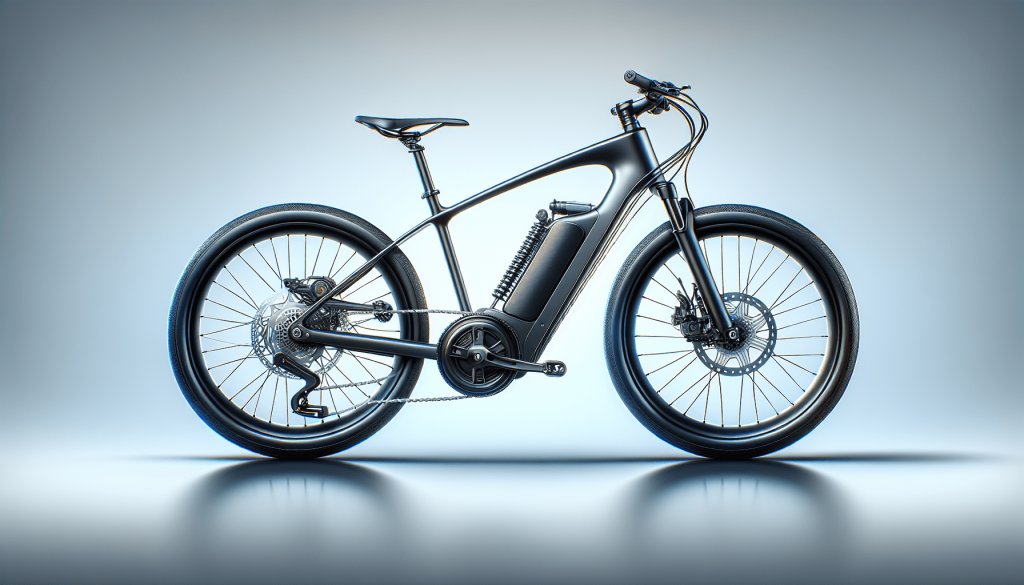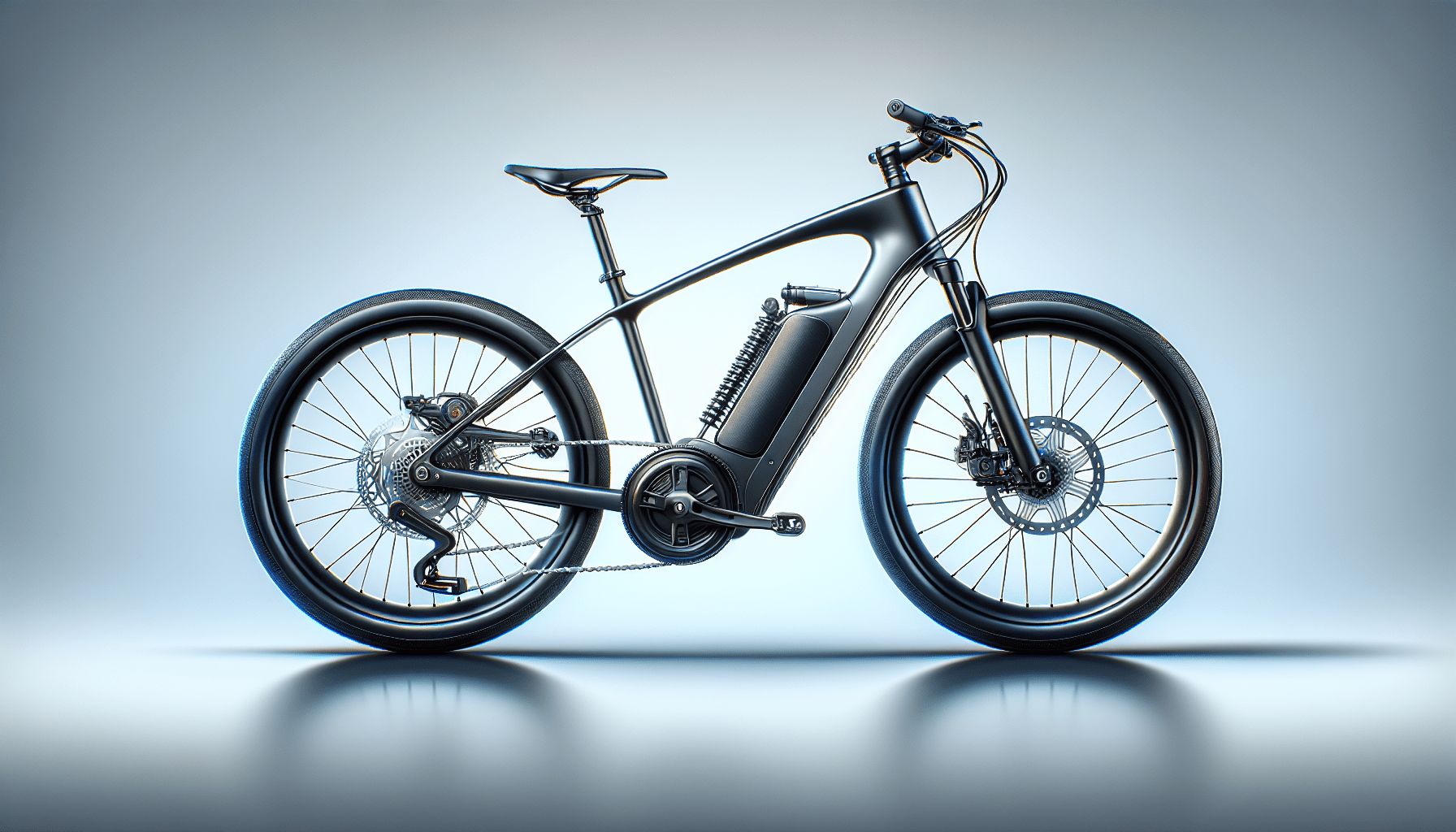What Is The Market Trend For Electric Bikes?
Electric bikes have become a popular choice for commuters and outdoor enthusiasts alike, but have you ever wondered about the market trend for these eco-friendly rides? With their ability to effortlessly traverse long distances and the growing emphasis on sustainability, electric bikes have experienced a significant surge in demand in recent years. From urban dwellers looking to beat traffic to adventure seekers seeking a greener alternative to traditional bicycles, the market for electric bikes is on an upward trajectory. In this article, we will explore the current market trend for electric bikes and shed light on what the future holds for this exciting mode of transportation. So, fasten your seatbelts and get ready to pedal into the world of electric bikes!

Growing Demand for Electric Bikes
Increasing popularity among consumers
The demand for electric bikes has been on the rise in recent years, with more and more consumers opting for this eco-friendly mode of transportation. electric bikes provide a convenient and cost-effective alternative to traditional bicycles and motor vehicles. They offer the benefits of a normal bike, such as exercise and energy efficiency, while also providing a boost of electric power to assist with pedaling. This combination of features has attracted a wide range of consumers, from commuters looking for a reliable mode of transportation to outdoor enthusiasts seeking an adventurous way to explore their surroundings.
Growing awareness of environmental benefits
One of the driving forces behind the increasing popularity of electric bikes is a growing awareness of their environmental benefits. With rising concerns about climate change and air pollution, many individuals are actively seeking ways to reduce their carbon footprint. electric bikes offer a greener alternative to gasoline-powered vehicles, as they produce zero emissions while in use. This makes them an attractive choice for environmentally-conscious consumers who want to make a positive impact on the planet. Additionally, the use of electric bikes can help alleviate traffic congestion, further reducing carbon emissions and promoting cleaner air in urban areas.
Advancements in technology
The continuous advancements in electric bike technology have also contributed to the growing demand for these vehicles. Manufacturers are constantly working on improving the performance, efficiency, and overall user experience of electric bikes. This includes increasing battery life and range, enhancing motor power and speed, and integrating smart features such as GPS navigation and smartphone connectivity. These technological advancements have made electric bikes more appealing to a wider audience, as they offer a level of convenience and functionality that traditional bicycles do not provide. With each new innovation, electric bikes become more practical, reliable, and enjoyable to ride.
Shifting Consumer Preferences towards Electric Bikes
Rise of e-commerce and online purchasing
The rise of e-commerce and online purchasing has significantly influenced consumer preferences and behaviors, including the choice of transportation. As more people turn to online shopping, the need for convenient and efficient methods of transportation has become paramount. Electric bikes offer a solution to this growing demand by providing a versatile and agile mode of transport that can easily navigate through crowded urban areas and deliver goods promptly. With a growing number of delivery services relying on electric bikes for last-mile deliveries, consumers are increasingly recognizing the benefits of these electric-powered vehicles.
Preference for healthier and eco-friendly transportation options
In recent years, there has been a noticeable shift in consumer preferences towards healthier and eco-friendly transportation options. People are becoming more health-conscious and are actively seeking ways to incorporate exercise into their daily routines. Electric bikes offer the perfect balance of physical activity and assistance, allowing riders to pedal when they desire a workout and rely on the electric motor when facing steep inclines or long distances. Additionally, the eco-friendly nature of electric bikes aligns with consumers’ desire to reduce their environmental impact and contribute to sustainable living.
Ease of use and convenience
Another factor driving the shift in consumer preferences towards electric bikes is their ease of use and convenience. Unlike traditional bicycles, electric bikes provide an extra boost of power that helps riders reach their destination faster and with less effort. This makes them an attractive option for individuals who may have physical limitations or struggle with a hilly terrain. Electric bikes also eliminate concerns about arriving at work or social engagements sweaty or exhausted, as riders can control the level of assistance and adjust their pedaling effort accordingly. With the added convenience of detachable batteries for easy charging and storage, electric bikes offer a hassle-free and enjoyable commuting experience.
Government Support and Regulations
Incentives and subsidies for electric bike purchases
Governments around the world recognize the value of electric bikes in promoting sustainable transportation and have implemented various incentives and subsidies to encourage their adoption. These include tax credits, purchase rebates, and low-interest financing options to make electric bikes more affordable for consumers. By reducing the financial barrier, governments aim to incentivize more individuals to switch from traditional bikes or cars to electric bikes, thereby reducing dependence on fossil fuels and improving air quality.
Development of dedicated infrastructure
To support the growing number of electric bike riders, governments have also invested in the development of dedicated infrastructure. This includes the creation of bike lanes, charging stations, and secure parking facilities specifically designed to accommodate electric bikes. By investing in the necessary infrastructure, governments aim to alleviate concerns regarding the lack of charging facilities and ensure that electric bike riders have the necessary resources to make their journeys safe and convenient.
Regulations promoting electric bike usage
In addition to incentives and infrastructure, governments have implemented regulations to promote the usage of electric bikes. This includes defining electric bikes as separate legal entities from motorcycles, allowing them to have their own set of regulations and standards. By recognizing electric bikes as a distinct form of transportation, governments can streamline the legal framework surrounding their use and ensure the safety of riders and pedestrians. These regulations also serve to provide clarity for manufacturers, making it easier for them to produce and market electric bikes that meet specific safety and performance standards.
Continued Innovation in Electric Bike Technology
Increasing range and battery life
The ongoing advancements in electric bike technology have focused on increasing the range and battery life of these vehicles. Manufacturers are continually improving battery technology, resulting in longer-lasting batteries that can provide a greater distance per charge. This is essential for riders who rely on their electric bikes for longer commutes or extended outdoor adventures. By extending the range and battery life, electric bikes can further eliminate range anxiety and allow riders to confidently embark on longer trips without worrying about running out of battery power.
Improvement in performance and efficiency
In addition to range and battery life, manufacturers are working to improve the overall performance and efficiency of electric bikes. This includes enhancing motor power and torque to provide a smoother and more responsive ride. By increasing the power output of electric bike motors, riders can enjoy faster acceleration and better hill-climbing capabilities. Furthermore, improvements in efficiency result in reduced energy consumption, allowing electric bikes to travel longer distances on a single charge. These advancements ultimately contribute to a more enjoyable and efficient riding experience.
Integration of smart features
The integration of smart features has also become a focal point of electric bike innovation. Manufacturers are leveraging technology to enhance the functionality and user experience of electric bikes. This includes the integration of GPS navigation systems, allowing riders to easily navigate unfamiliar routes and find the most efficient paths. Additionally, electric bikes can be equipped with smartphone connectivity, enabling riders to track their rides, monitor battery life, and even communicate with other riders. These smart features not only enhance convenience and safety but also cater to the tech-savvy preferences of modern consumers.

Expansion of Electric Bike Market Worldwide
Rapid growth in Asian markets, particularly China
Asia, particularly China, has witnessed rapid growth in the electric bike market. This can be attributed to various factors, including government support, densely populated urban areas, and a strong cycling culture. In China, electric bikes have become a popular mode of transportation, with millions of riders opting for this efficient and economical means of getting around. The availability of affordable electric bike models, coupled with the convenience they offer, has contributed to their widespread adoption in Asian markets.
Emerging markets in Europe and North America
While Asia leads the electric bike market, there has been a noticeable emergence of new markets in Europe and North America. The increasing interest in sustainable transportation options, coupled with a growing awareness of the benefits of electric bikes, has spurred demand in these regions. Governments and local authorities are taking steps to support the growth of the electric bike market by implementing infrastructure improvements and introducing regulations that encourage the usage of electric bikes. As a result, more European and North American consumers are embracing electric bikes as a viable mode of transportation.
Increasing adoption in urban cities
Electric bikes are gaining popularity in urban cities worldwide due to their maneuverability and versatility. In crowded cities with limited parking space and heavy traffic, electric bikes offer a convenient and efficient means of transportation. They enable riders to weave through congested streets and navigate narrow alleyways, avoiding the frustrations associated with traditional vehicle commuting. The integration of electric bikes into existing transportation networks and bike-sharing programs has also played a significant role in their increasing adoption in urban areas, providing commuters with flexible and affordable transportation options.
Rise in Electric Bike Rental and Sharing Services
Growing popularity of bike-sharing programs
The rise in electric bike rental and sharing services is a testament to the growing popularity of these programs among consumers. Bike-sharing programs, which allow individuals to rent electric bikes for short periods, have been widely embraced as a sustainable and convenient method of transportation. These programs enable users to access electric bikes on-demand, making them an attractive option for spontaneous trips or last-minute plans. Additionally, bike-sharing programs contribute to the reduction of private vehicle usage, which helps alleviate traffic congestion and reduce carbon emissions.
Increase in tourist destinations offering electric bike rentals
With the rise in global tourism, many popular destinations are now offering electric bike rentals to cater to the needs and preferences of travelers. Electric bikes provide tourists with a unique and enjoyable way to explore new cities and tourist attractions. They offer a more immersive experience compared to traditional methods of transportation, allowing visitors to cover more ground and discover hidden gems off the beaten path. Electric bike rentals in tourist destinations are particularly beneficial for individuals who want to explore at their own pace and avoid relying on crowded tour buses or public transportation.
Flexible and affordable transportation options
Electric bike rental and sharing services provide individuals with flexible and affordable transportation options. They eliminate the need for long-term commitments or the upfront cost of purchasing an electric bike. Instead, users can simply rent an electric bike whenever they need it, whether for a few hours or a full day. This flexibility allows individuals to tailor their transportation choices to their specific needs and preferences. Additionally, the affordability of electric bike rentals makes them accessible to a wide range of people, including tourists, students, and individuals who may not have the means to purchase their own electric bike.

Challenges and Limitations for Electric Bike Market
High initial cost compared to traditional bicycles
One of the main challenges facing the electric bike market is the higher initial cost compared to traditional bicycles. Electric bikes incorporate advanced technology, including motors and batteries, which contribute to their higher price tag. This can deter some consumers who are hesitant to invest a significant amount of money upfront. However, it is important to consider the long-term cost savings associated with electric bikes, such as reduced fuel expenses and lower maintenance requirements. As technological advancements continue to drive down production costs, electric bikes are becoming more affordable and accessible to a wider consumer base.
Lack of standardization in regulations and specifications
Another challenge for the electric bike market is the lack of standardization in regulations and specifications across different countries and regions. Each jurisdiction may have its own set of rules, classifications, and safety requirements for electric bikes. This can create confusion among manufacturers, retailers, and consumers, making it difficult to establish consistent product standards and ensure the safety and compliance of electric bikes. However, efforts are underway to harmonize regulations and establish international standards, which will help address these challenges and promote greater consistency in the electric bike market.
Limited charging infrastructure in certain areas
The limited charging infrastructure in certain areas poses a challenge for electric bike users. While electric bikes offer the advantage of being able to charge at regular electrical outlets, the availability of charging stations can still be a limiting factor, especially in rural or remote areas. Without a reliable network of charging stations, electric bike riders may face range anxiety and have limited options for recharging their batteries during long journeys. However, as the demand for electric bikes increases, the development of charging infrastructure is expected to expand, addressing this challenge and providing riders with convenient charging solutions.
Integration of Electric Bikes in Sustainable Mobility Solutions
Integration with public transportation systems
Electric bikes have the potential to be seamlessly integrated with existing public transportation systems, providing commuters with a sustainable and efficient multi-modal transportation solution. By allowing riders to combine electric bike rides with public transportation, such as buses, trains, or subways, individuals can cover longer distances and bypass congested roads. This integration not only reduces travel time but also promotes a more sustainable and eco-friendly mode of transportation. Commuters can enjoy the health benefits of cycling while benefiting from the convenience of public transportation for longer segments of their journey.
Use as a last-mile transportation solution
Electric bikes are increasingly being recognized as an ideal last-mile transportation solution. The last-mile refers to the final leg of a journey, typically from a transportation hub, such as a train station or bus stop, to the final destination. Electric bikes offer a practical and efficient way to cover this last-mile distance, as they are compact, agile, and do not require dedicated parking space. By incorporating electric bikes into their daily commute, individuals can avoid the hassle and congestion of finding parking, reduce their overall travel time, and contribute to a more sustainable transportation network.
Potential to reduce traffic congestion and emissions
The integration of electric bikes in sustainable mobility solutions has the potential to significantly reduce traffic congestion and emissions in urban areas. With their ability to maneuver through traffic and access narrow spaces, electric bikes can help alleviate congestion on busy roads, especially during peak hours. By encouraging more individuals to switch from cars to electric bikes for short trips or daily commuting, cities can experience a significant decrease in traffic volume and a corresponding reduction in emissions. This not only improves air quality but also creates a more livable and sustainable urban environment for residents.

Economic and Environmental Benefits of Electric Bikes
Reduced dependence on fossil fuels
One of the key economic and environmental benefits of electric bikes is their ability to reduce dependence on fossil fuels. Unlike gasoline-powered vehicles, electric bikes utilize electric motors and rechargeable batteries, eliminating the need for gasoline or diesel fuel. By reducing the consumption of fossil fuels, electric bikes help decrease carbon emissions and contribute to a cleaner and greener environment. This reduced dependence on fossil fuels also helps mitigate the volatility of fuel prices, providing users with a more stable and predictable mode of transportation.
Cost savings on fuel and maintenance
Another significant economic benefit of electric bikes is the potential for cost savings on fuel and maintenance. Electric bikes consume considerably less energy compared to traditional motor vehicles, resulting in lower fuel expenses for riders. Additionally, electric bikes have fewer moving parts and require less frequent maintenance compared to gasoline-powered vehicles, which translates into reduced maintenance costs for owners. As a result, electric bikes offer a more cost-effective transportation option over the long term, allowing riders to save money on both fuel and maintenance expenses.
Positive impact on overall air quality
By emitting zero tailpipe emissions, electric bikes have a positive impact on overall air quality. Traditional gasoline-powered vehicles release pollutants such as carbon monoxide, nitrogen oxides, and particulate matter, which contribute to air pollution and respiratory health issues. In contrast, electric bikes produce zero direct emissions, which helps reduce air pollution and improve the quality of the air we breathe. This has significant health benefits for both riders and the general population, particularly in densely populated urban areas where air pollution levels can be high. The improved air quality associated with electric bikes creates a healthier and more sustainable living environment.
Future Outlook and Growth Potential
Expected increase in market penetration
The future outlook for the electric bike market is promising, with experts predicting a continued increase in market penetration. As more consumers become aware of the benefits of electric bikes, including their environmental, economic, and health advantages, the demand for these vehicles is expected to rise. The ongoing advancements in electric bike technology, coupled with government support and regulations, will further drive the growth and acceptance of electric bikes among a wider audience. Additionally, the integration of electric bikes into sustainable mobility solutions and the rise of electric bike rental and sharing services will contribute to the expansion of the market and its accessibility to a broader range of consumers.
Technological advancements driving further growth
Technological advancements will play a crucial role in driving further growth and innovation within the electric bike market. Manufacturers are continually investing in research and development to improve battery technology, increase motor power and efficiency, and enhance the overall performance of electric bikes. As technology continues to advance, electric bikes will become more efficient, lightweight, and cost-effective, making them an even more attractive option for consumers. These advancements will also provide opportunities for new players to enter the market and offer innovative electric bike solutions that cater to specific consumer needs and preferences.
Emergence of new players and competition
The growth potential of the electric bike market has attracted the attention of both established players and new entrants in the industry. As the market expands, new companies are emerging, bringing fresh ideas, designs, and technologies to the table. This increased competition fosters innovation and offers consumers a wider range of options to choose from. With the rise of e-commerce and online purchasing, consumers have access to a global marketplace, allowing them to explore electric bike offerings from various manufacturers and make informed decisions based on their specific requirements. This competition and diversity of products will continue to fuel the growth of the electric bike market and drive further advancements in the years to come.
In conclusion, the market trend for electric bikes is experiencing significant growth and development. The increasing popularity among consumers, growing awareness of environmental benefits, advancements in technology, government support and regulations, and the integration of electric bikes into sustainable mobility solutions are driving the demand for these vehicles. With the expansion of the electric bike market worldwide, the rise of electric bike rental and sharing services, and the economic and environmental benefits they offer, electric bikes are poised to revolutionize transportation and become a prominent mode of travel in the future. The continued innovations in electric bike technology, combined with the anticipated increase in market penetration and the emergence of new players, further cement the bright future and growth potential of the electric bike industry.








